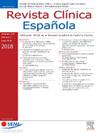携带艾滋病毒的衰老:共病的横断面分析
IF 1.7
4区 医学
Q2 MEDICINE, GENERAL & INTERNAL
引用次数: 0
摘要
与一般人群相比,艾滋病毒感染者(PLHIV)患多种疾病的风险增加。本研究的目的是评估50岁以上PLHIV患者的非感染性合并症和老年综合征的患病率。方法对西班牙某大学医院门诊定期随访的一组PLHIV患者进行横断面分析,研究对象为年龄在50岁及以上的PLHIV患者。参与者按年龄分为10年一组。估计了每种合并症的粗患病率和标准化患病率及其在各年龄组的趋势。多病患病率(>;2种疾病)也进行了评价。所有的患病率都是用精确的方法估计的。结果共检测hiv感染者122例,其中25.4%为女性,13%居住在养老院。从HIV诊断到最后一次记录访问的中位时间为19(9-29)年。多病的总体患病率为37% (95% CI: 28.4-45.6%),最普遍的合并症是心血管危险因素血脂异常(37.7%;95% CI: 29.6-46.6%),高血压(26.2%;95% CI: 19.2-34.7%),糖尿病(14.8%;95% CI: 9.5-22.1%)和非艾滋病定义的癌症(15.6%;95% ci: 10.2-23.0%)。最常见的老年综合征是骨折/骨质疏松症(9.8%;95% CI: 5.7-16.4%),痴呆(8.2%;95% CI: 4.5-14.4%)和虚弱(8.2%;95% ci: 4.5-14.4%)。大多数合并症和多病的患病率在各年龄组中呈显著增加趋势。结论50岁以上人群非传染性合并症和老年综合征患病率较高。在这一人群中,多发病随年龄增长而增加。本文章由计算机程序翻译,如有差异,请以英文原文为准。
Envejecimiento con VIH: un análisis transversal de las comorbilidades
Background
People living with HIV (PLHIV) are at increased risk of multimorbidity compared to the general population. The goal of this study is to evaluate the prevalence of non-infectious comorbidities and geriatric syndromes in PLHIV older than 50 years old.
Methods
A cross-sectional analysis was conducted on a cohort of PLHIV regularly followed at an outpatient clinic in a university hospital in Spain, focusing on PLHIV aged 50 and above. Participants were categorized by age into 10-year intervals. Crude and standardized prevalence of each comorbidity and its trend across age groups were estimated. The prevalence of multimorbidity (> 2 diseases) was also evaluated. All prevalence were estimated with the exact method.
Results
We evaluated 122 PLHIV, of which 25.4% were women and 13% resided in nursing homes. The median time between HIV diagnosis and the last documented visit was 19 (9-29) years. Overall prevalence of multimorbidity was 37% (95% CI: 28.4-45.6%), being the most prevalent comorbidities cardiovascular risk factors dyslipidemia (37.7%; 95% CI: 29.6-46.6%), hypertension (26.2%; 95% CI: 19.2-34.7%), diabetes mellitus (14.8%; 95% CI: 9.5-22.1%) and non-AIDS defining cancers (15.6%; 95% CI: 10.2-23.0%). The most common geriatric syndromes were fractures/osteoporosis (9.8%; 95% CI: 5.7-16.4%), dementia (8.2%; 95% CI: 4.5-14.4%) and frailty (8.2%; 95% CI: 4.5-14.4%). The prevalence of most comorbidities and multimorbidity showed a significantly increasing trend across age groups.
Conclusions
PLHIV who are over 50 years of age have a high prevalence of non-infectious comorbidities and geriatric syndromes. Multimorbidity increases with age in this population group.
求助全文
通过发布文献求助,成功后即可免费获取论文全文。
去求助
来源期刊

Revista clinica espanola
医学-医学:内科
CiteScore
4.40
自引率
6.90%
发文量
73
审稿时长
28 days
期刊介绍:
Revista Clínica Española published its first issue in 1940 and is the body of expression of the Spanish Society of Internal Medicine (SEMI).
The journal fully endorses the goals of updating knowledge and facilitating the acquisition of key developments in internal medicine applied to clinical practice. Revista Clínica Española is subject to a thorough double blind review of the received articles written in Spanish or English. Nine issues are published each year, including mostly originals, reviews and consensus documents.
 求助内容:
求助内容: 应助结果提醒方式:
应助结果提醒方式:


